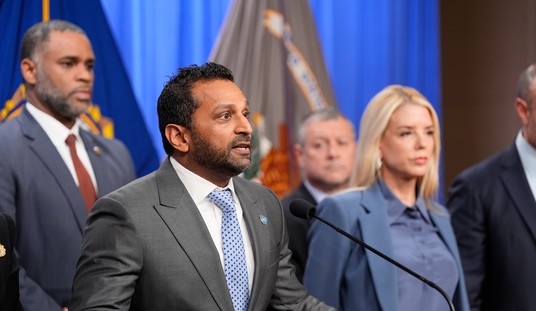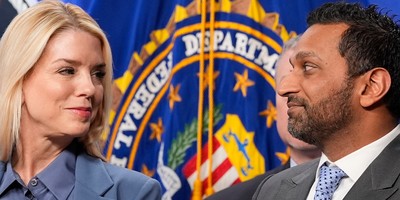The Dodd–Frank Wall Street Reform and Consumer Protection Act, sarcastically known as Dodd-Frankery and Dodd-Frankenstein, was passed into law in response to the financial crisis and recession of 2008. It contains the most drastic changes to financial regulations since the regulatory reform after the Great Depression. Proposed by Obama in 2009 and signed into law in 2010, the Democratic bill was the handiwork of former Financial Services Committee Chairman Barney Frank (D-Mass.) in the House and former Banking Committee Chairman Chris Dodd (D-Conn.) in the Senate. It was supposedly going to stop banks from making loans to risky buyers who could not pay them back, reducing foreclosures. It was also supposed to change the rules so banks could no longer receive taxpayer-funded bailouts due to their poor business practices.
It hasn't worked out the way its Democrat proponents claimed. This is because the people who got us into this mess are the same ones who drafted the law. Dodd-Frank contains more of the same things that precipitated the financial crisis; government meddling in the mortgage business and financial markets. Lobbyists for special interests carved out loopholes, resulting in merely different lists of winners and losers. As one author in U.S. News & World Report observed, “These exemptions are less about protecting unsophisticated borrowers than about protecting the taxpayer-guaranteed business models of favored entities.” Hedge funds and some other firms lost big; they are now required to fill out a 192-page form that has been estimated to cost each firm $100,000-$150,000.
Speaking of winners or losers, most outrageously, Dodd-Frank didn’t bother to reform Fannie Mae or Freddie Mac, the biggest culprits for handing out mortgages to high-risk borrowers who should never have qualified for them. They received the largest bailouts of all financial institutions in 2008.
The 848-page-long act created numerous new federal agencies. It grossly expanded oversight by federal agencies to non-bank financial institutions and their subsidiaries. It required federal agencies to write 398 new rules in order to put the act’s 1,500 provisions into place. It will cost taxpayers millions to run all the new agencies and enforce the rules, and will hurt economic growth and harm the competitiveness of U.S. firms relative to their foreign counterparts.
Recommended
Over 14,000 pages later, less than half of the rules have been implemented, and numerous deadlines have been missed. Imagine what would happen to employees in the private sector who repeatedly missed deadlines.
The Economist speculated that “the harm done by the massive cost and complexity of its regulations, and the effects of its internal inconsistencies, will outweigh what good may yet come from it.” Even more disturbing, “Officials are being given the power to regulate more intrusively and to make arbitrary or capricious rulings.”
Dodd-Frank came down hard on loan officers and mortgage brokers. Many mortgage brokers are expected to go out of business next year. All loan originators must now be qualified, licensed, registered, and issued a unique identifier. They are restricted from charging more than a three percent fee for all loan origination costs, which is hampering the ability of banks to offer mortgages on homes priced between $100,000 and $160,000. Many may simply shut out this working-class market.
While it superficially sounds good to impose stringent requirements and qualifications in order for borrowers to qualify for mortgages, the one-size-fits-all model really doesn’t fit everyone, and is resulting in investors gobbling up home sales, since fewer average Americans now qualify. According to real estate guru Martin Andelman, since 2009, cash sales to investors
Homeowners are paying more for mortgages because of all the new restrictions and requirements. The regulations simply embolden lenders to work around them, working within “safe harbors” and loopholes to engage in alternative forms of risky lending. Fannie Mae and Freddie Mac loans are exempt from the new regulations, as are timeshare loans, due to stellar lobbyists. So the Dodd-Frank cap on debt-to-income-ratio of 43 percent won’t apply to the riskiest of all loans.
The home vacancy rate is fairly high, over 10 percent, and home values have started dropping again. Around 25 to 50 percent of mortgages are still underwater. Andelman doesn’t see any decrease in foreclosures in the future. He reports that three quarters of the country is living paycheck-to-paycheck, and only about the top one percent have significant savings.
Banks are passing the costs of Dodd-Frank on to consumers. Dodd-Frank arbitrarily cut down on some bank fees, resulting in the banks diverting costs to customers in other ways. Since Dodd-Frank cracked down on banks charging debit card fees, the banks turned around and started eliminating free checking accounts.
Bank bailouts are still authorized, with certain banks designated as “systemically important financial institutions,” code words for too big to fail. Even worse, the government is then authorized to essentially take over the institution. Sadly, bankers don’t dare criticize Dodd-Frank publicly, or they run the risk of retaliation by the regulators.
Dodd-Frank looks a lot like campaign finance reform; lobbyist-influenced changes being made to a system that pick winners and losers, perpetuating the problem as players find ways around the regulations. It fails to address the principal causes of the 2008 meltdown: The banks made risky loans, knowing the government would bail them out once the loans went south, then sold them to murky institutions on Wall Street where they sometimes became untraceable. These derivatives were driven by a combination of Wall Street banks and politicians. Until the government stops bailing out these kinds of practices, the banks have no incentive to change their risky behavior. Dodd-Frank must be repealed.























Join the conversation as a VIP Member